Sharing the international boundary on its northern part with the Tibet Autonomous Region of China, the Dibang Wildlife Sanctuary was declared a wildlife sanctuary on 12th March 1998. This sanctuary covers an area of 4,149 km2 and was named after the Dibang River. The wildlife-rich sanctuary boasts more than 156 mammal species including the elusive Mishmi takin, the elegant red goral, two distinct species of musk deer, the charismatic red panda, the majestic Asiatic black bear, the occasional tiger and Gongshan muntjac. Over 137 bird species including rare bird species the elusive Sclater’s monal and Blyth’s tragopan also reported in the Dibang Wildlife Sanctuary.
Dibang Wildlife Sanctuary Location
- Dibang Wildlife Sanctuary is located in the Dibang Valley district of Arunachal Pradesh in northeast India.
- This sanctuary spanning an area of 4,149 square kilometers in the Dibang Valley district of Arunachal Pradesh is the second-largest protected area in India.
- It is situated between 95° 17´ and 96° 38´ East longitudes and 28° 38´ and 29° 27´ North latitudes with altitudes ranging from 1800 to 5500 meters above mean sea level (AMSL).
- Part of the sanctuary falls within the Dihang Dibang Biosphere Reserve.
- The Sanctuary was notified on March 12th, 1998 (vide no. CWL/D/42/92/744-844) and it shares an international boundary with the Tibet Autonomous Region of China in the north.

Dibang Valley District and Demographics
- The area of Dibang Valley district is 9,129 square kilometers making it the largest district in Arunachal Pradesh.
- As per the census 2011, the population of Dibang Valley district was 8,004, the least populated district in India.
- The population growth rate from 2001–2011 was 9.3%.
- The sex ratio is 808 females for every 1000 males.
- The literacy rate stands at 64.8%.
Administration:
Anini town is the district headquarters Dibang Valley District situated at an elevation of 1968 meters above mean sea level. The district is administered under 1 subdivision, 3 blocks, and 6 circles The district shares international boundaries with Tibet to the north and east while the Upper Siang district lies to the west and the Lower Dibang Valley district to the south.
The Indigenous Tribe and Culture
The Dibang Valley district is mainly inhabited by the Idu Mishmi tribe which is one of the four sub-tribes of the Mishmi community. The other three sub-tribes are Digaru Mishmi, Miju Mishmi and Deng Mishmi. The Idu Mishmi people are recognized as Schedule Tribes (ST) under The Constitution (Scheduled Tribes) Order, 1950. They follow the religion of animism and hold beliefs in the presence of spirits within their natural surroundings. The tribe has its own distinct culture, languages and traditional healing practices and they perform ritual ceremonies.
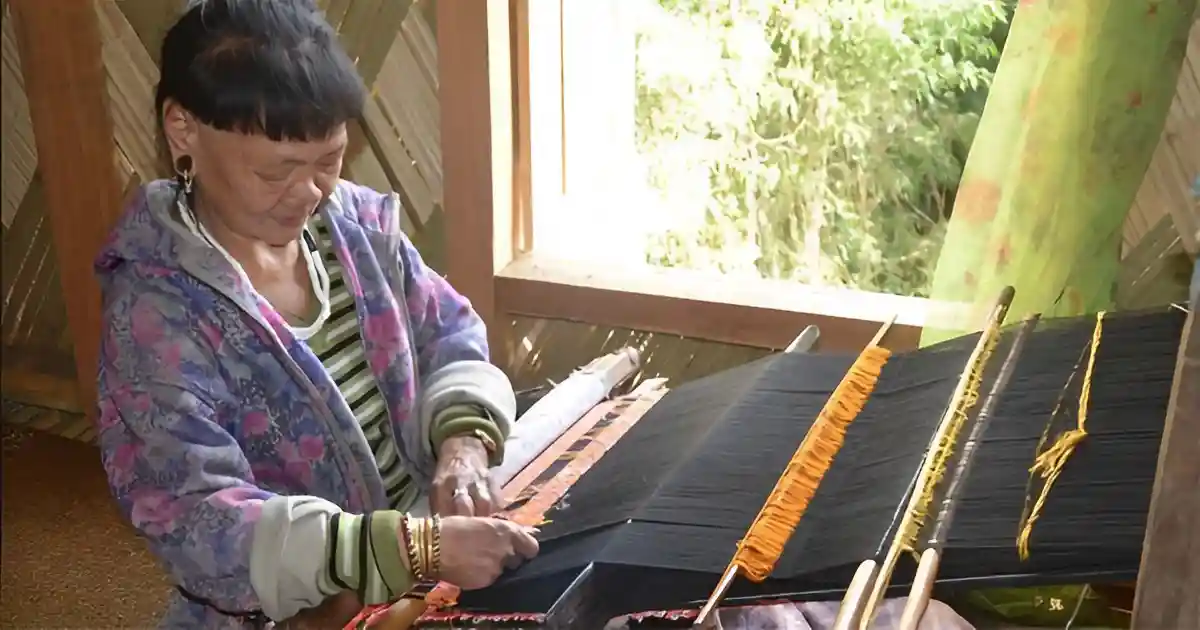
Economic Activities and Ecological Practices
The majority of households in the Idu Mishmi community are engaged in subsistence farming and seasonal hunting while others work as government employees, contractors or businessmen. Given the rugged terrain of the Dibang Valley district shifting or jhum cultivation is the primary agricultural practice. Rice, buckwheat, maize, millet and various vegetables are the major crops cultivated. The community also maintains fruit orchards and horticulture plantations including apple, kiwi, orange, plum, pear, cardamom and ginger for local consumption and sale in the local market.
To meet nutritional requirements and supplement their income, some villagers engage in hunting wild animals such as barking deer, Himalayan serow, Red goral, wild pig, Mishmi takin, musk deer and Asiatic black bear. However, the Idu Mishmi people follow a unique traditional ecological culture and management system to ensure the sustainable use of natural resources and prevent overexploitation of wildlife.
The coexistence of the Idu Mishmi tribe and the diverse faunal species within the unique landscape of the Dibang Wildlife Sanctuary highlights the importance of preserving the ecological balance and promoting conservation efforts in the region.
Dibang Wildlife Sanctuary Map and Boundary
The sanctuary is nestled in the Eastern Himalayas and covers a vast area of pristine wilderness. As per notification vide no. CWL/D/42/92/744-844 dtd. Itanagar, the 12th March/98 of Dibang Wildlife Sanctuary is bordered by the Dibang River to the south which acts as a natural boundary for the sanctuary and the Lower Dibang Valley district. To the north and east, the sanctuary shares international borders with the Tibet Autonomous Region of China. The western region of the sanctuary is bounded by the Upper Siang district.

Edaphic Characteristics of Dibang Wildlife Sanctuary
(a) Geology and Soil:
The Dibang Wildlife Sanctuary in Arunachal Pradesh lies in the Trans Himalaya on the Eastern limb of the Eastern Himalayan Syntaxis. It is characterized by denudational structural hills consisting of diorite, tonalite, granodiorite, hornblende granite, pegmatites, gneiss, schist, marble bands and quartzites. The hills are highly eroded, fractured and geo-dynamically active leading to landslides and mass movements.
The region experiences high rainfall, averaging 2,866 mm per year, promoting chemical alteration. The soil is generally acidic containing high humus and nitrogen with downstream valleys being clayey and rich in organic matter.
(b) Terrain:
The sanctuary encompasses elements of the lesser and greater Himalayan ranges featuring mountainous, gorges, rugged and steep to very steep terrains. The altitude ranges from 1800 to 5500 meters above mean sea level (AMSL) with snow-capped peaks throughout the year. Valleys and natural lakes intersperse the peaks including Dri valley, Mathun valley, Tallon valley, Ahi valley, and Amra valley each with distinct geographical and biological characteristics.

(c) Climate and Rainfall:
Arunachal Pradesh has a tropical monsoon climate, but regions at higher elevations like Mishmi Hills exhibit a mountain-type climate. Summers experience average maximum temperatures of 24°C and average minimum temperatures dropping to 0°C. Harsh winters with frequent snowfall occur from November to March with temperatures reaching sub-zero levels between December and February.
The Dibang Wildlife Santuary experiences a pre-monsoon season from March to May followed by the monsoon season from June to October. The region occurs an annual rainfall of about 2866 mm mainly influenced by the Southwest monsoon of South Asia (April-October) and the Northeast monsoon of East Asia (December-April). Sporadic rainfall occurs throughout the year.
d) Rivers:
The Dibang River, a major tributary of the Brahmaputra River originates in the southern slopes of the Adzon Chhu peak in Arunachal Pradesh. The sanctuary is traversed by numerous small rivers, perennial rivulets and tributaries that flow into the Dibang River. The Mathun and Dri rivers merge at the western side of Anini to form the Dibang River while the Tallon River joins the Dibang River at Etalin. Other tributaries including Ithun, Deopani and various small nullahs merge with the Dibang River downstream. The Dibang River eventually joins the Dihang and Lohit rivers near Laikaghat forming the Brahmaputra River.
Ecological Attributes of Dibang Wildlife Sanctuary
(a) Floral Diversity
Floral diversity in the Dibang Wildlife Sanctuary can be categorized into different forest types based on their dominant species and ecological characteristics. These categories include:
1. Temperate Broadleaf Forests: Dominated by species such as Michelia spp., Quercus lamellosa, Quercus spp., Magnolia spp., Castanopsis indica, Castanopsis spp., Acer hookeri, Alnus nepalensis and Populus ciliata. These forests thrive at elevations ranging from 1800 to 2800 metres above mean sea level.
2. Temperate Conifer Forests: Characterized by dominant species like Abies spp., Tsuga dumosa, Rhododendron arboretum, Taxus baccata and Pinus wallichiana typically found at elevations of 2800 to 3500 meters above mean sea level.
3. Alpine Forests: Dominated by Rhododendron spp., Saussurea spp., Sedum spp., Primula, Saxifraga spp. and other high-altitude plants. These forests are situated between 3000 and 5500 meters above mean sea level.

In addition to these forest types the sanctuary also exhibits grasslands in the foothills and various bamboo species, including Phyllostachys bambusoides, Arundinaria spp. and Cephalostachyum spp. Endemic and rare medicinal plants like Coptis teeta, Paris polyphylla, Panax pseudo, Panax sikkimensis, Artemisia nilagirica and others are also found in this region. The existence of shrubs, herbs, ferns and trees with epiphytic mosses further contributes to the growth of the floral diversity within the sanctuary.
The diverse vegetation composition within the Dibang Wildlife Sanctuary is a result of the interplay between micro-climatic factors, topography, soil conditions and biological interactions. The varying altitude gradients provide suitable habitats for different forest types allowing for a wide range of plant species to thrive in this unique ecosystem.
(b) Faunal Diversity
Faunal Species in Dibang Wildlife Sanctuary and Adjoining Landscapes:
The Dibang Valley of Mishmi Hills in the Indian part of the Eastern Himalaya Biodiversity hotspot is a truly remarkable landscape. What sets it apart is the presence of a thriving tiger population at an astonishing altitude of over 3630 meters above mean sea level (amsl).
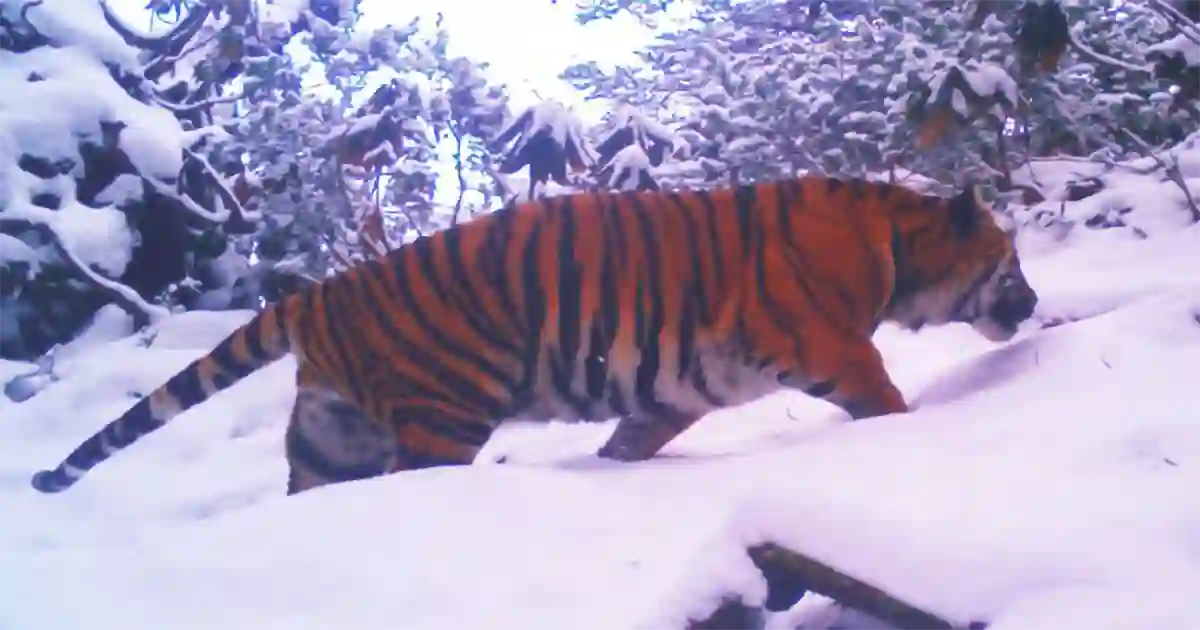
The Dibang Wildlife Sanctuary also hosts an incredible diversity of faunal species. Within the Dibang Wildlife Sanctuary (DWLS) and its surrounding landscapes numerous endangered, rare, endemic and threatened species can be found. Some of the notable faunal species found in the sanctuary are:
I. Big Cats:
- Bengal tiger (Panthera tigris tigris)
- Snow leopard (Panthera uncia)
- Clouded leopard (Neofelis nebulosa)
II. Wild Cats:
- Asiatic golden cat (Catopuma temminckii)
- Marbled cat (Pardofelis marmorata)
- Leopard cat (Prionailurus bengalensis)
- Fishing cat (Prionailurus viverrinus)
- Jungle cat (Felis chaus)
III. Canids:
- Asiatic wild dog (Cuon alpinus)
IV. Other Mammals:
- Mishmi takin (Budorcas t. taxicolor)
- Goral (Naemorhedus goral)
- Musk deer (Moschus chrysogaster)
- Barking deer (Muntiacus muntjak)
- Himalayan serow (Capricornis sumatraensis thar)
- Wild pig (Sus scrofa)

Avian Diversity in Dibang Wildlife Sanctuary:
The Dibang Wildlife Sanctuary boasts a rich avian diversity with a variety of Pheasant species thriving within its forested habitat. Among the notable species found here are the Mishmi Monal, Red Breasted Hill Partridges (Arborophila torqueola), Blood Pheasants, Kalij Pheasants (Lophura Leucomelanos), Blyths’s Tragopan, Sclater’s Monal (Lophophorus Sclateri) and Temminck’s Tragopan (Tragopan temminckii). These birds contribute to the vibrant ecosystem of the sanctuary.

Best Time to Visit Dibang Wildlife Sanctuary
To make the most of your visit to Dibang Wildlife Sanctuary, it is advisable to plan your trip during the favorable seasons. Here are the recommended periods based on the weather conditions:
1. Summer (March to May):
- Average maximum temperature: Around 24°C.
- Average minimum temperature: Around 0°C.
- This period offers pleasant weather for exploring the sanctuary, with comfortable temperatures and minimal rainfall.
2. Monsoon (June to October):
- Expect heavy rainfall during this season, as the area receives both the Southwest and Northeast monsoons.
- While the sanctuary might be lush and green, trekking and outdoor activities may be challenging due to rainfall and slippery trails. It is advised to be cautious during this period.
- The average annual rainfall is approximately 2866 mm although occasional rains occur throughout the year.
3. Winter (November to February):
- Harsh winter conditions prevail during this period, with frequent snowfall and sub-zero temperatures (0°C).
- This season may not be ideal for visiting the sanctuary due to extreme cold and difficult travel conditions.
Considering the pleasant weather and rainfall is relatively low, the best time to visit Dibang Wildlife Sanctuary is during the summer season (March to May).
Why Visit Dibang Valley and Dibang Wildlife Sanctuary
Dibang Valley located on the parts of the Dibang River is a stunning destination in Arunachal Pradesh marking the northernmost point of Northeast India. This culturally and naturally rich place, influenced by its proximity to the Indo-China border, houses the captivating Dibang Wildlife Sanctuary, renowned for its diverse flora and fauna. Here’s why Dibang Valley and its Wildlife Sanctuary are a must-visit:
1. Pristine Beauty: Dibang Valley is a treasure trove of untouched natural wonders and within it lies the Dibang Wildlife Sanctuary. With its green forests, snowcapped mountains and sparkling rivers the valley presents a picture-perfect setting straight out of a postcard.

2. Dibang Wildlife Sanctuary: Spanning a vast area, the Dibang Wildlife Sanctuary is a haven for wildlife enthusiasts. It is thriven with various flora and fauna including several rare and endangered species. Visitors can spot elusive creatures like the Mishmi takin, clouded leopard, Bengal tiger and many more making it a paradise for wildlife lovers and photographers.
3. Adventure Opportunities: Dibang Valley and the Wildlife Sanctuary offer numerous adventure activities. From trekking through the sanctuary’s rugged terrains and camping under the starry sky to exploring hidden waterfalls and encountering exotic wildlife, there is no shortage of thrilling experiences for adventure seekers.
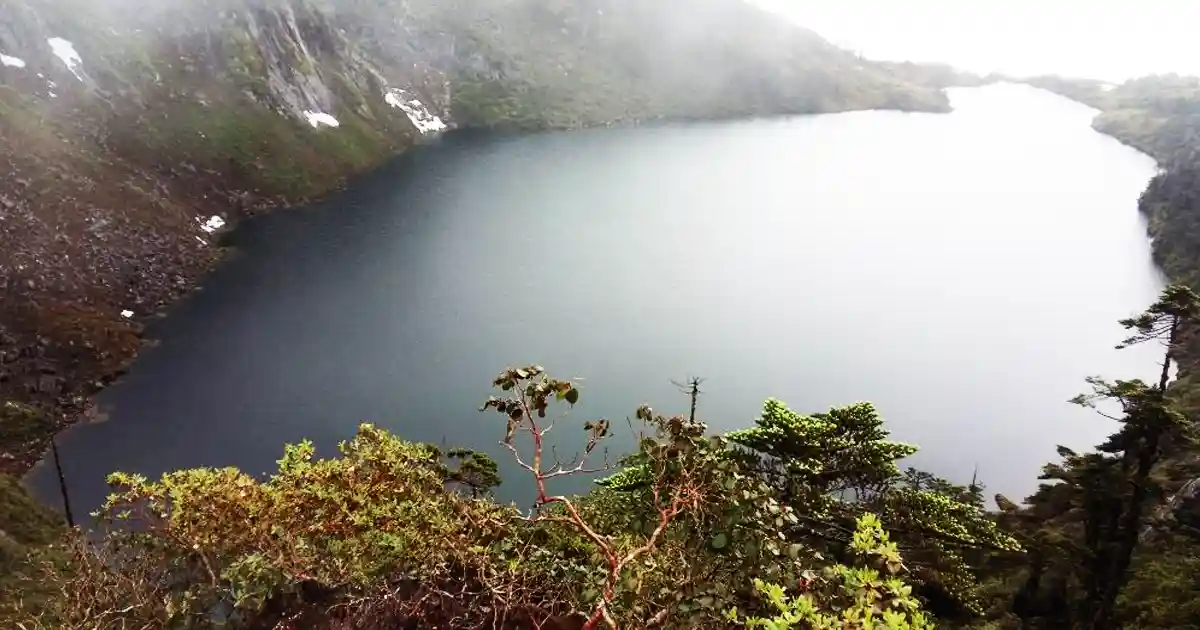
4. Cultural Splendor: In addition to its natural charm and wildlife, Dibang Valley boasts a rich cultural heritage. The close proximity to the Indo-China border has resulted in a unique cultural fusion adding an extra layer of fascination to the experience.
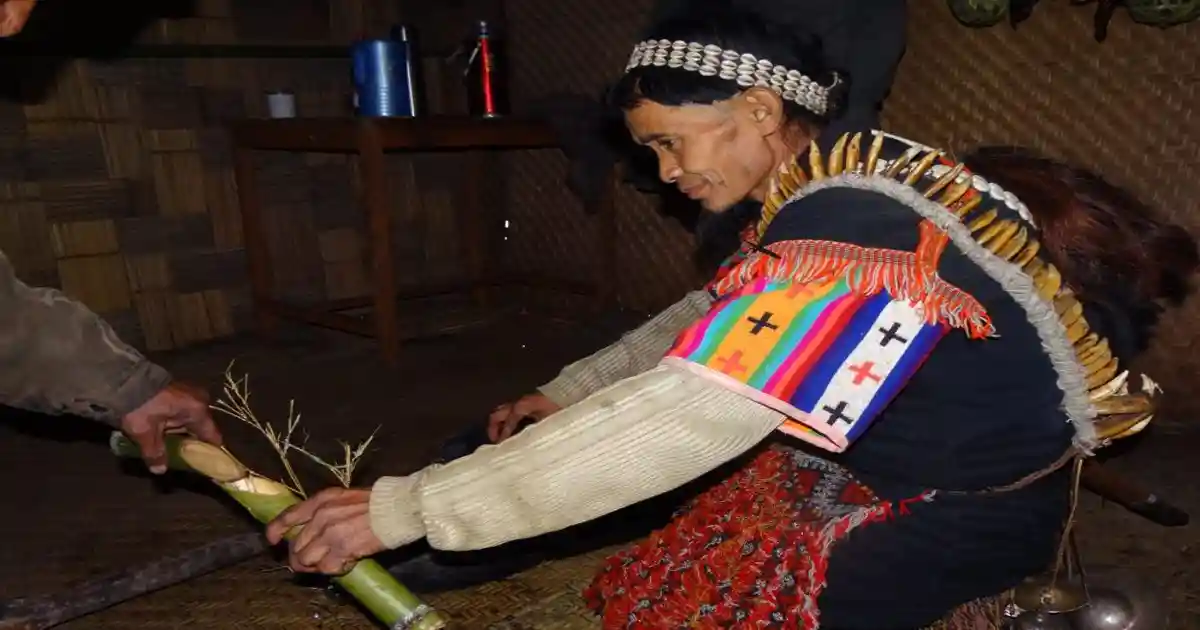
5. Warm Hospitality: The local inhabitants of Dibang Valley are known for their warm hospitality and friendly demeanor. Visitors can immerse themselves in the local culture, interact with the indigenous tribes and indulge in authentic regional cuisine.
How to Reach Dibang wildlife sanctuary
1. Inner line permit
To visit Arunachal Pradesh Indian nationals must obtain an Inner Line Permit or Restricted Area Permit while foreigners need a Protected Area Permit. Additionally, permission from the regional forest office is necessary.
To obtain an Inner Line Permit (ILP) for Arunachal Pradesh, follow these steps:
- Understand the ILP system in Arunachal Pradesh.
- Choose the appropriate ILP category (Protected Area Permit or Restricted Area Permit).
- Visit the designated ILP issuing authorities in Arunachal Pradesh, such as:
- Itanagar Deputy Resident Commissioner’s Office Address: Civil Secretariat, Itanagar, Arunachal Pradesh Website: http://itanagar.nic.in
- Guwahati ILP Counter Address: House No. 1, GNB Road, Ambari, Guwahati, Assam Website: http://arunachalilp.com
- Tezpur ILP Counter Address: Circuit House Complex, Tezpur, Assam
- Dibrugarh ILP Counter Address: Circuit House, Dibrugarh, Assam
- Shillong ILP Counter Address: House No. 26, Lachumiere, Shillong, Meghalaya
- Gather the required documents: ID proof, photographs, filled application form, address proof, and travel itinerary.
- Submit the application and pay the ILP fees (cost around Rs 100 whether it is online or offline).
- Await approval and collect your ILP.
- Carry and present the ILP during your visit.
Stay updated on the latest requirements and guidelines from the Arunachal Pradesh Tourism Department. Plan your trip in advance for a smooth visit.
2. How to Reach
Dibang Wildlife Sanctuary is reachable via Anini in the Upper Dibang Valley district. It is well-connected to Roing and you can avail of regular bus and taxi services. Here are the three transportation options to reach Dibang Wildlife Sanctuary.
By Air: The nearest airport to Dibang Wildlife Sanctuary is Dibrugarh. It offers regular flights from Guwahati and Kolkata. From there you can take prepaid taxis to reach the sanctuary via Roing. Alternatively, you can inquire with the Dibrugarh airport authorities about the Arunachal Pradesh helicopter service to Anini.
By Rail: The closest railway station to Dibang Wildlife Sanctuary is Tinsukia Railway Station. From here you can take a direct bus or hire a taxi to reach the sanctuary.
By Road: To reach Dibang wildlife sanctuary you need to cross Roing and Anini and you can reach via national highway 515, 313 from Tinsukhia, Assam. There are regular buses available provided by Arunachal Pradesh State Transport Services and Assam State Transport Corporation.
3. Where to Stay?
Dibang Wildlife Sanctuary is situated close to Anini, the headquarters of the Dibang Valley district in Arunachal Pradesh. Anini provides a variety of accommodation options, both government-run and private. Visitors can choose from places such as Circuit House in Roing and Anini, Mayudia tourist lodge, hotel Lasa and Hotel Mimu in Roing. For a unique experience staying at a forest rest house within the sanctuary is also an option.
For those seeking an immersive experience in traditional tribal settings, Mishmi Hills Camp offers a captivating choice.

Conclusion
In summary, Dibang Wildlife Sanctuary is a splendid wildlife sanctuary located within the unique landscape Dibang Valley of Arunachal Pradesh. With its wonderful natural beauty, lively cultural historical heritage and proximity to the Indo-China border, it gives truly unique and unforgettable experiences. Whether or not you are an ardent flora and fauna fanatic or certainly are searching for solace in the embrace of nature, the sanctuary’s various flora and fauna coupled with conventional tribal impacts make it a must-visit for all.
FAQ
a.) What is Dibang Wildlife Sanctuary famous for?
The Dibang Wildlife Sanctuary is famous for its diverse and rare wildlife including Mishmi takin, red goral, musk deer, red panda, Asiatic black bear, occasional tiger, Gongshan muntjac, Sclater’s monal and Blyth’s tragopan.
b.) Which animal is famous in Dibang Wildlife Sanctuary?
The forest of Dibang Wildlife Sanctuary is home to a diverse range of animals including rodents, squirrels, red pandas, musk deer, serow, leopard, tiger, orange-bellied Himalayan squirrel, wild boar, Himalayan black bear, barking deer, snow leopard, sun bear and the famous Mishmi takin.
c.) In which district is the Dibang Wildlife Sanctuary?
Dibang Wildlife Sanctuary is located in the Dibang Valley district of Arunachal Pradesh in northeast India.
d.) How do I get to Dibang Wildlife Sanctuary?
An inner-line permit or Restricted Area Permit is needed to visit this protected area of Arunachal Pradesh. To reach Dibang Wildlife Sanctuary, the nearest railway station is Murkeongselek Railway Station, located 323km away from Anini.
You May Also Like




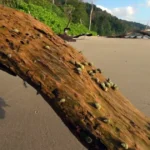



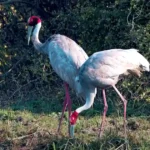

1 thought on “Dibang Wildlife Sanctuary”